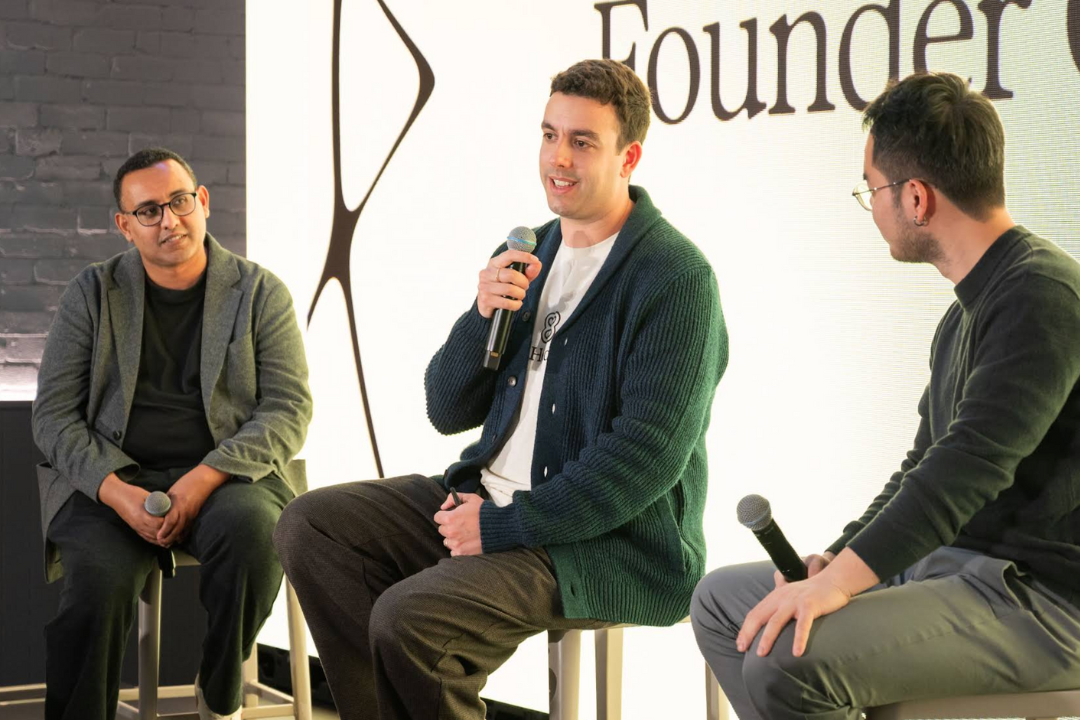
After reporting around the world, including war zones in Iraq, Afghanistan, and Libya, war correspondent Jeff Kofman - who had worked with CBS, ABC, and CBC News - had grown frustrated with the process of manually transcribing hours of audio from interviews, press conferences and active war zones - so much so that he decided give up a successful 30+ year career in journalism to build a solution.
There was only one problem: while Jeff knew how this kind of transcription software should work, he had no idea how to build it. That’s when he met a team of three software developers who had created a pioneering technology using speech-to-text.
Together they started Trint. Since its founding in 2014, Trint has raised $7.8m; won countless awards, such as 2018’s UK Startup of the Year; and worked with the likes of Google’s Digital News Innovation Fund, Adobe® Premiere® Pro and The Associated Press to launch a number of new features, APIs, and partnerships.

What is Trint?
There are a lot of ways voice-to-text transcription is useful for everyday consumers: Siri, Alexa, voice search, lecture recording and sending messages. However, Jeff knew that automated transcription would be an essential, everyday tool in the right hands, so Trint decided to initially specialise in the media workflow.
Imagine trying to find a single quote from a 2-hour speech - similar to finding a needle in a haystack. Worse still, imagine typing out the entire speech to add subtitles to a video. I tried doing this for a 20-minute interview; after an hour of listening to the audio in slow motion while typing, I was struggling to understand conversations at regular speed for the rest of the day.

In newsrooms, global corporations, financial institutions, law firms and countless other companies , days’ worth of footage have to be transcribed. This is the problem that Jeff is tackling with Trint: in addition to creating a platform that can be used by individuals, like freelance video producers and SMEs, some of the world’s biggest companies are finding new ways to unlock value with Trint’s speech-to-text platform. At face value, Trint allows you to upload audio files and then automatically transcribes them in minutes or even seconds. However, with Trint’s use of AI and additional features such as Vocab Builder (custom dictionary), the platform is constantly learning, improving and expanding its vocabulary.
But, like with manual human transcription, the AI makes mistakes. So the team decided to tackle that problem by creating a platform that lets teams collaboratively edit transcripts on their shared document editor, the Trint Editor. This streamlines the process of checking and correcting any mistakes.
New Features
Being successful in modern journalism and content creation has placed a growing premium on speed. The news cycle runs 24/7 and being among the first to publish a story is critical. However, reporting still has to be accurate. Let’s say, for example, a journalists is tasked with writing a summary of speech being given by a politician. To do so quickly, he will need to right the summary as he is hearing the speech, but to do so accurately he would need to wait until a full transcript has been published long after the speech has finished.

This is where Trint’s Realtime Transcription comes into play. Using this software, teams have a live transcription of the speech being added to a dedicated word processor, as each word is spoken. This tackles the compromise between speed and accuracy. Journalists and other content creators can now begin summarising the speech with accurate quotes and statistics before the speech has even finished.
Trint’s Translation feature complements Realtime by offering 28 languages into which a live transcription can be translated. Not only can journalists now publish content more quickly without sacrificing accuracy, they can do so in languages they don’t speak.
The Future
With a customer base that includes Nike, The Associated Press, The Washington Post, CNN and the NYPD, to name a few, Trint have clearly tackled a pain point with their platform. This exemplifies the power of being product-led; Jeff experienced the pain of manual transcription as a reporter, questioned why it was the industry norm and then built a solution for the large scale problem.
Jeff has ensured the product-led mentality remained core the the development of the platform. Each week Trint reach out to their customers to find out where they could develop their product. The customer knows best. In 2019, this approach saw Trint expand their global presence with the addition of new languages to the platform as well as introducing new features.
In 2020, the team at Trint has one plan: growth, "Creating Trint has been an incredible journey so far. I'm deeply proud of the work we've done to create our platform. But I know the most exciting parts of the journey are still to come. 2020 will be our biggest year by far - more innovation, more growth and more passion for the product. I can't predict exactly what Trint will look like a year or two from now, but I know it will be remarkable."








